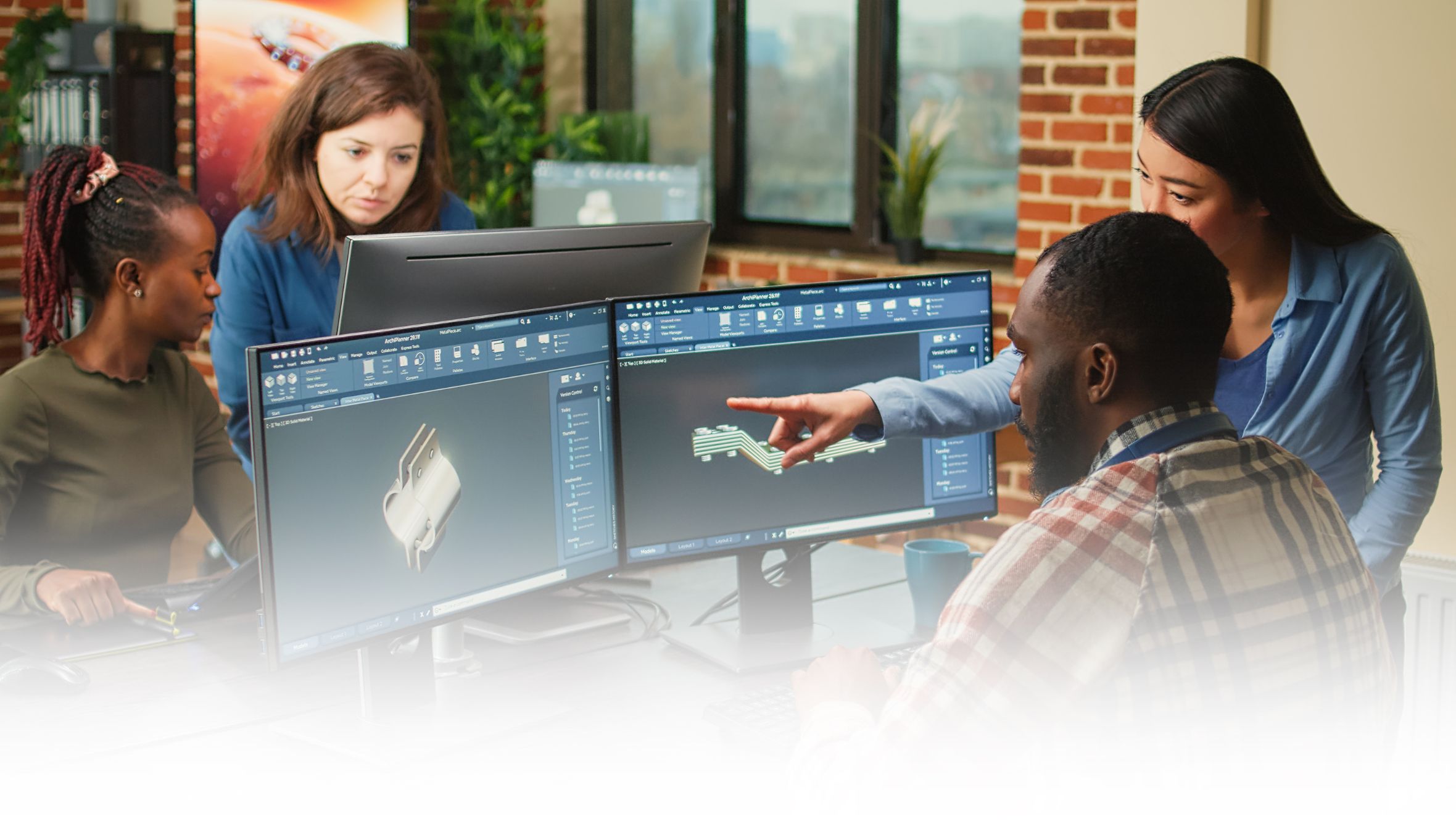Fintech Transformation – The importance of the TaaS Model in Nearshore Development
Smart Consulting plays a pivotal role in the digital transformation of this fintech company, contributing with their experience in TaaS to support the development and refactoring of their applications..
Case Study
February 23, 2024
8 minutes read

“”
Team as a Service is a service where nearshore teams are set-up to partner with specific clients and projects. This is the real tailored solution for IT needs designed by an architectural team with a specific company, project, and need in mind.
Key Takeaways:
– Smart Nearshore collaborated with a Fintech client based in Luxembourg to refactor an existing platform with four core applications related to the banking sector.
– The client faced challenges with their previous nearshore provider, including issues with deliverables, work ethics, and communication style.
– The primary objective was to refactor applications developed in Java and JavaScript, which exhibited performance issues and outdated design after seven years of service.
– The client emphasized the importance of having a culturally aligned nearshore team for smooth collaboration.
– Smart Nearshore operates on two levels: Team Extension and Team as a Service.
– Team as a Service involves setting up nearshore teams tailored for specific clients and projects, with roles such as Tech Lead, Backend Specialist, Frontend Specialist, and Business Analyst.
– Smart Nearshore initially employed only a Tech Lead for the first month to assess the project comprehensively.
– After defining priorities and roadmap, additional consultants, including Backend and Frontend Developers, were added gradually to ensure a strong foundation for the project.
– The refactoring process aimed to modernize applications by transitioning to Java with Spring Boot, utilizing cloud infrastructure, and adopting React for frontend development.
– The entire technological stack was revamped to align with current industry standards.
– The ambitious goal was to complete the refactoring of at least one application by the end of 2023, demonstrating the feasibility and benefits of modernization.
– Future plans include reinforcing the team, continued application refactoring, and sustained collaboration with the client’s internal resources.
– The collaboration signifies successful alignment of cultural values and a commitment to technological excellence.
– Ongoing refactoring efforts aim to address immediate concerns and future-proof applications for continued success in the rapidly evolving Fintech landscape.
Project context:
In the dynamic landscape of Fintech, Smart Nearshore, Smart Consulting’s nearshore branch, embarked on a transformative journey with a prominent client. This Fintech entity based in Luxembourg operates four core applications intricately linked with the banking sector: Payment Banking, Global Payment Processing, Account Receivable and Payment Automation, and a comprehensive Dashboard accessible via their website.
Smart Nearshore’s client was looking to refactor an already existing platform. To that effect, they had contracted a team of nearshore developers to a third entity from Easter Europe. Often in nearshore services, some communication and cultural alignement issues arrise, such as disaligment in deliverables, work ethics, and communciation style. The client was facing some of these challenges with their previous provider, and, as such, they began looking for a nearshore partner.
Eventually Smart Nearshore took over the project, taking a spin on the traditional TaaS model, thus trying to combat the challenges the client had faced with the previous team.
Objectives:
The primary objective was to refactor their existing applications, which, after seven years of service, exhibited performance issues, outdated design, and an inability to support the existing technology. The application was developed in Java and Java script, as such, Prime Group’s team opted to upboost their apps using Java with Springboot using the cloud and sprout up the front-end using React.
The client’s main criteria were to have a culturally aligned nearshore team, that allowed for smooth collaboration. This is, after all, one of the main benefits companies can extract from nearshoring IT services – expertise and cultural alignment,
The implementation of Team as a Service
Smart Nearshore operates on two different levels – Team as a Service and Team Extension.
Team Extension refers to the use of precise recruitment to add value to an existing team. It allows companies to unburden their teams while having access to IT engineers with different backgrounds and ways of thinking, enriching your own company’s culture.
Team as a Service is a service where nearshore teams are set-up to partner with specific clients and projects. This is the real tailored solution for IT needs designed by an architectural team with a specific company, project, and need in mind. As such, designing a dedicated development team for this specific project brought to light several benefits. The Tech Lead acted as the bridge between our team and the client, ensuring effective communication and understanding of project objectives. Smart Nearshore’s backend Specialist focused on enhancing the backend architecture for optimal performance, while the Frontend Specialist overhauled the user interface to address design issues and improve user experience. Business Analyst collaborated with stakeholders to understand business requirements and ensure alignment with the technical changes.
Strategic Approach to Team as a Service
Seeing as the client had had a previous experience with a nearshore partner that had some challenges, Smart Nearshore took on a different approach to the traditional TaaS model. During the first month of the project’s development Smart Nearshore employed only one consultant to the project – a Tech Lead. His job was to take an holistic approach to assess the development of the project. Namely to assess what was done, the coding structure, the connections to external APIs, and the existing documentation.
After this assessment, the Tech Lead, together with the management team, defined priorities and traced a roadmap for the development of the project. Once this was done, it was time to start setting-up and preparing for the team’s onboarding. A month and a half into Smart Nearshore’s involvement with the project, 2 additional consultants were hired – a Backend Developer and a Frontend Developer.
As such a team of three consultants comprising a Tech Lead and specialists in backend, frontend, allowed a strong back-bone to the project, so that it could advance smoothly. Eventually, with the transition from legacy technology features into more recent ones, two more Backend Developers were added to project.
Our role involved not only the refactoring of the applications but also collaborating with the client’s in-house team responsible for maintaining the existing applications. The goal was to bring about a seamless transition and cultural alignment, as was asked.
Technical Overhaul:
The refactoring process aimed to modernize the applications, transitioning them to Java with Spring Boot, leveraging cloud infrastructure, and adopting React for frontend development. The entire technological stack was revamped to align with current industry standards.
Milestones and Future Plans:
The ambitious goal set for the project was to complete the refactoring of at least one application by the end of 2023. This initial phase aimed to demonstrate the feasibility and benefits of the modernization effort.
Future plans include further reinforcement of the team, continued refactoring of application, and a sustained collaboration between our team and the client’s internal resources. The project is a strategic one for the client, and as such the point is for the team to continue to update and overlook the project even after the refactoring is concluded.
Conclusion:
The collaboration between our software house and the Fintech client signifies a successful alignment of cultural values and a commitment to technological excellence. The ongoing refactoring efforts aim to not only address immediate performance and design concerns but also future-proof the applications for continued success in the rapidly evolving Fintech landscape.







